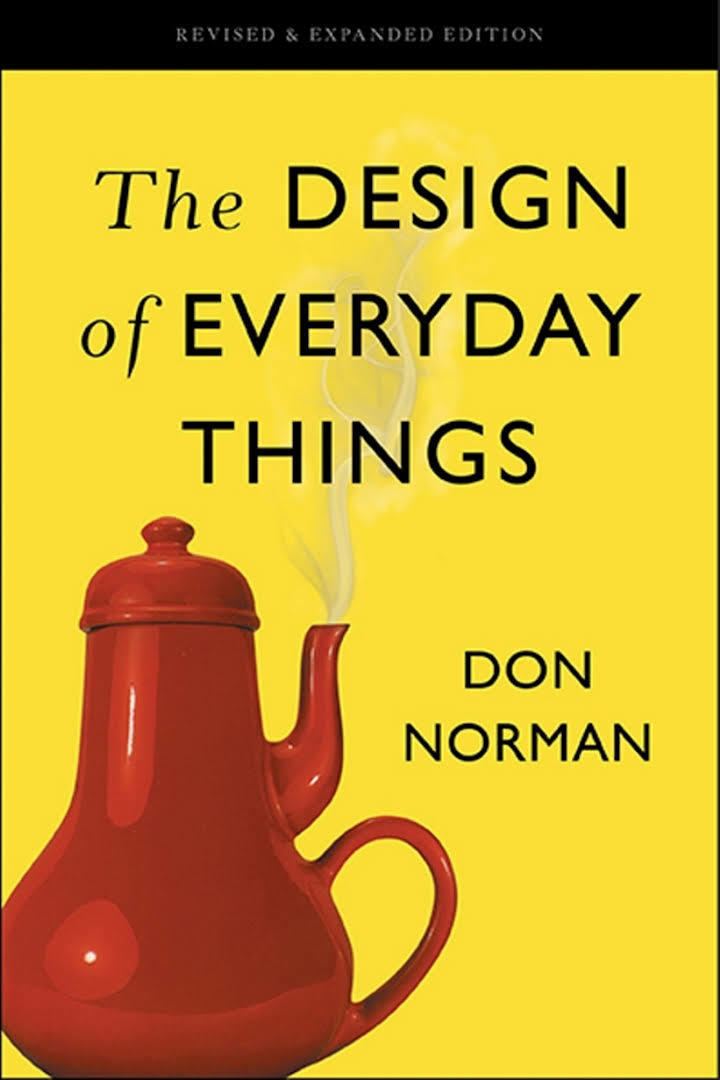9.2 /10 1 Votes9.2
5/5 Barnes & Noble Publication date 1988 Originally published 1988 Country United States of America Genres Design, Psychology | 4.2/5 Goodreads Language English Dewey Decimal 620.8'2—dc20 ISBN 978-0-465-06710-7 | |||||||||||||||||||||||||||||||||
 | ||||||||||||||||||||||||||||||||||
Original title The Psychology of Everyday Things Similar Emotional Design, Don't Make Me Think, Living with Complexity, The Design of Future Things, Things That Make Us Smart | ||||||||||||||||||||||||||||||||||
The design of everyday things by don norman
The Design of Everyday Things is a best-selling book by cognitive scientist and usability engineer Donald Norman about how design serves as the communication between object and user, and how to optimize that conduit of communication in order to make the experience of using the object pleasurable. One of the main premises of the book is that although people are often keen to blame themselves when objects appear to malfunction, it is not the fault of the user but rather the lack of intuitive guidance that should be present in the design.
Contents
- The design of everyday things by don norman
- Welcome to the course intro to the design of everyday things
- References
The book was published in 1988 with the title The Psychology of Everyday Things. Norman said his academic peers liked that title, but believed the new title better conveyed the content of the book and better attracted interested readers. It is often referred to by the initialisms POET and DOET.
Norman uses case studies to describe the psychology behind what he deems good and bad design, and proposes design principles. The book spans several disciplines including behavioral psychology, ergonomics, and design practice.
A major update of the book, The Design of Everyday Things: Revised and Expanded Edition, was published in 2013.
Welcome to the course intro to the design of everyday things
Contents
In the book, Norman introduced the term affordance as it applied to design, adding a perceptual dimension to James J. Gibson's concept of the same name. Examples of affordances are flat plates on doors meant to be pushed, small finger-size push-buttons, and long and rounded bars we intuitively use as handles. As Norman used the term, the plate or button affords pushing, while the bar or handle affords pulling. Norman discussed door handles at length.
He also popularized the term user-centered design, which he had previously referred to in User Centered System Design in 1986. He used the term to describe design based on the needs of the user, leaving aside what he deemed secondary issues like aesthetics. User-centered design involves simplifying the structure of tasks, making things visible, getting the mapping right, exploiting the powers of constraint, designing for error, explaining affordances and seven stages of action. He goes to great lengths to define and explain these terms in detail, giving examples following and going against the advice given and points out the consequences.
Other topics of the book include:
After a group of industrial designers felt affronted after reading an early draft, Norman rewrote the book to make it more sympathetic to the profession.
